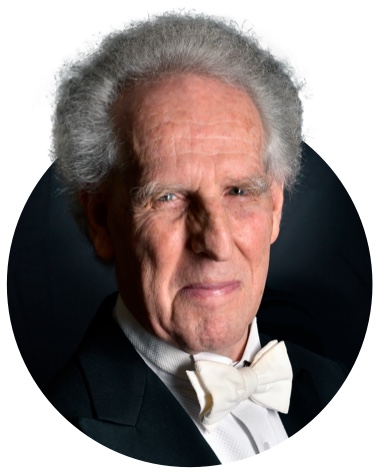Brahms: Piano Concerto no. 2
Benjamin Zander (speaker)

“In order to enjoy the music, you have to have a sense of knowing where you are. And that means not being pulled constantly from one tempo area to another.”
— Benjamin Zander

Video Transcript
Ben Zander:
I will tell you that we’ve come up with some rather interesting insights, the most important of which I’ve actually been wrestling with for quite a long time. The first movement of Brahms second piano concerto presents a huge problem for the performers. It starts with a horn solo.
There’s then an arpeggio in the piano and then horn plays. And then the winds play. Then, the piano comes back and it’s a completely different tempo, nothing to do with the opening horn solo. And most of the performances just accept that and you live with it. Get over it.
I don’t think of music that way, and nor do I think did Brahms. Brahms was a classicist; he was a constructionist. He believed in things being related. So, I’m convinced that he wanted those three elements to be at the same tempo. But you never hear them at the same tempo.
There’s a very, very funny recording. You can get everything on YouTube these days, isn’t it amazing. I’m going to tell you about this recording and some of you are going to go home and listen. Edwin Fischer, the pianist. Furtwangler, the conductor. The horn player, instructed by Furtwangler, begins very slowly. And then Fischer says, “I don’t agree with that tempo.” And then Furtwangler says, “I don’t care what you think. I’m going to play it very slowly.” And then Fischer says, “No, I don’t like that tempo.”
It’s really hilarious. They’re clearly totally at loggerheads. You’ll hear it and you’ll laugh because they haven’t made up their minds. They don’t know what to do. Most players who play this piece didn’t know what to do with this problem. So, we found a solution! Otherwise, I wouldn’t have brought it up.
I’m absolutely certain that Brahms wanted the tempo of this piece to be this way. And I have a little clue because he only left metronome marks for one symphonic work. And this was the one. The tempo that he left was 92 for the first movement which is exactly what I just played. So, there must be some relationship. This is what we do. We cheat a little. We stretch the timing in the passages that want to be broad instead of changing the tempo. We pull the elastic like that and then when we let go of the elastic, it goes back into tempo.
It’s all in one tempo and it makes sense. The piece makes sense. I think human beings need to know where they are in order to be happy. I just invented that I don’t think it means anything. What I mean is, in order to enjoy the music, you have to have a sense of knowing where you are. And that means not being pulled constantly from one tempo area to another. Particularly in this music. So, we’ve solved that for you. And I think you’ll get enormous satisfaction. I believe. In fact, so many people commented last night that it had a new feeling of freshness and beauty.
The second movement doesn’t have anything remarkable except that the way it’s played is usually the way he intended. Except there’s one thing that Alessandro brings which is very exciting which is that it’s marked allegro appassionato. The word appassionato… I keep hearing it in my ear while we’re playing it. The music is actually saying the word appassionato.
The third movement is revelatory. It’s usually played very slowly, as an adagio. And it’s marked to be an andante. And we have the most exquisite cellist. If you know who he is, you know his playing, you know what I mean. We have a few players like that. We have an oboist like that. Nobody can explain why the moment they play their instruments, tears well up in your eyes. You know exactly what I mean even though it’s almost impossible to understand it.
You will hear it today. You’ll hear playing and you’ll say, “Oh my God that’s so beautiful.” It’s very, very beautiful the way it moves. It’s like a lullaby. It’s a tender lullaby. There’s a beautiful song by Brahms the Immer leiser with the same theme. So, there’s every good reason to expect that that’s what he believed. And the last movement interestingly enough which many people like to hop up and play fast is marked to be played very gently. Very tender, very intimate, and very light. I think it’s exquisitely beautiful at exactly Brahms intended tempo markings. Isn’t that nice? Kind of satisfying. So, you’ll find it very refreshing and the playing is exquisite.